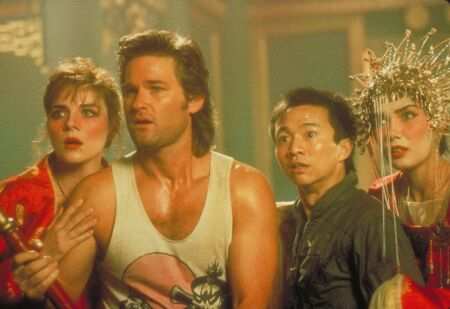Calgary building up for Kurt Russell movie, Edmonton’s accessible art scene, Saskatchewan writer wins large non-fiction prize, and Winnipeg’s trash talk
 Kurt Russell movie to be shot in Calgary
Kurt Russell movie to be shot in Calgary
He caused some big trouble in little China and now Calgary carpenters will be going to some trouble to erect a set for Kurt Russell’s new film to be shot in 2013. The film is called Race to Save Nome and is scheduled to start shooting in January near Morley, where a stand -in small city will need to be built. Nome wasn’t built in a day, indeed, but it is going to take 150 carpenters to build 70 two-story buildings near the settlement located on the Stony Indian reserve west of Calgary, to get the set ready.
Brian Presley will play the lead role of Leonhard Seppala, who delivers a serum to Nome, Alaska by dog sled after they have been struck with a diphtheria epidemic. This is based on the true story of the Great Race of Mercy of 1925. John Goodman will also be a member of the supporting cast while the character that Kurt Russell will be playing has not yet been revealed.
Damian Petti, president of International Alliance of Theatrical Stage Employees, Moving Picture Technicians, Artists and Allied Crafts Local 212 says that the producers are looking for something unique and majestic and they can find that here. Petti says there is a great sense of pride in their community.
Keeping Kurt Russell in the Dark link: http://www.youtube.com/watch?v=tmfe5_6SV8U
 Art Gallery of Alberta
Art Gallery of Alberta
Whether you are a visitor or resident of Edmonton, it has an incredible art scene that will agree with the most prudent of spenders. It seems the Alberta city is on the map for having access to affordable art. The Art Gallery of Alberta has an entry fee of $12.50 per person, and family passes, which include two adults, and up to four minors to experience the gallery for $26.50.
The Royal Albert Museum not only showcases a number of natural history displays but also celebrates its tribal art form. They offer a First Nations beaded and feathered clothing exhibit that is quite extensive. Adult admission to this venue is $10 each but the museum offers half price entry on Saturday and Sunday between the hours of 9:00 am and 11:00 a.m.
Art comes in many forms and Edmonton’s heart of it pulsates with many venues to check out performances and festivals. The downtown arts district has its five-stage Citadel Theater and the intimate Francis Winspear Center for Music. It is also home to the Edmonton Symphony Orchestra; live performances also abound in Old Strathcona. This area boasts a hip street scene with older brick buildings, outdoor murals, international eateries and unique indie theater offerings.
Edmonton is truly an arts mine just waiting for its gems to be discovered.
Source: http://www.orlandosentinel.com/travel/vs-frugal-traveler-edmonton-canada-20121112,0,6458293.story
 Saskatchewan writer Candace Savage
Saskatchewan writer Candace Savage
Candace Savage of Eastend, Saskatchewan won the Hilary Weston trust prize in the amount of $60,000 for her non-fiction book A Geography of Blood: Unearthing Memory from a Prairie Landscape. Published by Greystone Books and the David Suzuki Foundation, it was named a winner in Toronto on Monday evening at Koerner Hall by prize sponsor Hilary Weston.
Savage’s book investigates the natural and anthropological history of the Cypress Hills. Savage moved to the hills in 2000 where she spent a decade researching the area’s history and what happened to its indigenous people. Savage told CBC news that the Cypress Hills area remembers, things, events and organisms that the rest of the area and the Great Plains have forgotten.
“Even though there is a heart of darkness, I’ve tried to tell the story with enough charm that we can bear to look collectively. It’s a story that’s hiding in the open. I’ve dragged details from the archive and I’ve put the pieces together in a different way,” says Savage.
Savage drew on research she’d done for earlier books, including natural history works such as Prairie: A Natural History and human history titles such as Cowgirls for A Geography of Blood
Source: http://www.cbc.ca/news/arts/story/2012/11/12/hilary-weston-prize.html
 Brady landfill in Winnipeg
Brady landfill in Winnipeg
Winnipeg’s coffee shops and hockey rinks have been filled with trash talk, referring to the city’s bumpy transition to an automated recycling and garbage collection system. The new garbage bins are to be an integral first step in the new blanket master plan said to help our city’s dismal waste management statistics.
If you are unaware of the stats simply put we could change our city’s name to Waste-ipeg. We send more garbage to the landfill, per capita, than any other municipality in Canada. We generate 750,000 tonnes of waste each year, which is equal to the weight of 200,000 full-grown African elephants. That works out to be 1,000 kilograms from each citizen and even with a blue box in each home that still only diverts 17 per cent of our waste from the landfill. According to experts we have the lowest recycling rate in the country.
Winnipeg’s goal is to double recycling rates to 35 per cent in the next five years and to achieve 50 per cent by the year 2020. The master plan will also implement measures to reduce the environmental impact of the Brady Road Landfill, including greater control of leachate, a toxic liquid that filters down through the garbage. According to researchers 10 per cent of Canada’s greenhouse gasses come from landfill sites. At Brady Road, annual greenhouse gas emissions are equivalent to that of approximately 70,000 passenger vehicles.
Source: http://www.winnipegfreepress.com/opinion/columnists/whats-rotten-in-denmark-178804291.html
___
Chadd Cawson is an intern at Spectator Tribune. Follow him at: @ChaddCawson
For more follow us at: @spectatortrib
